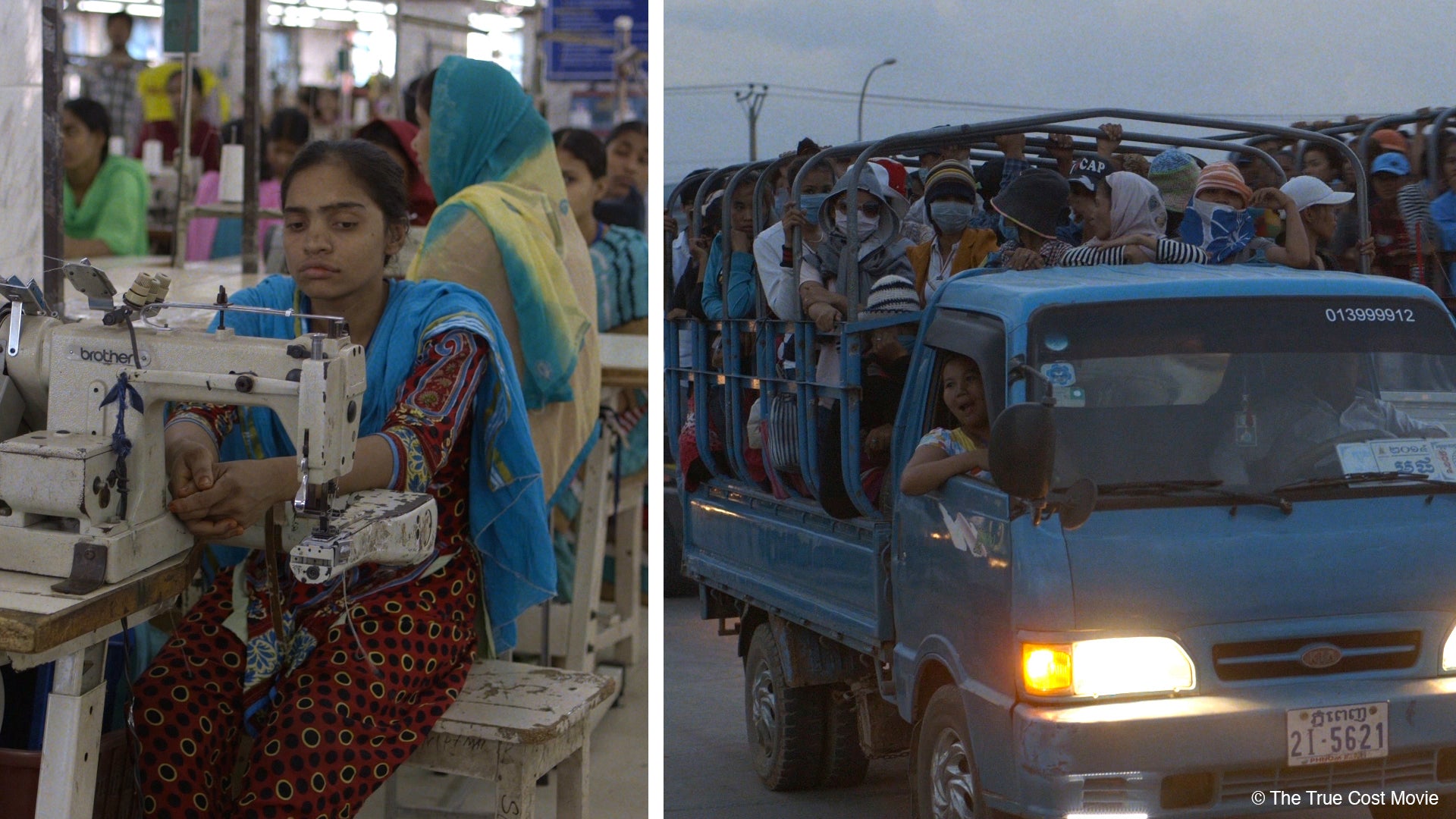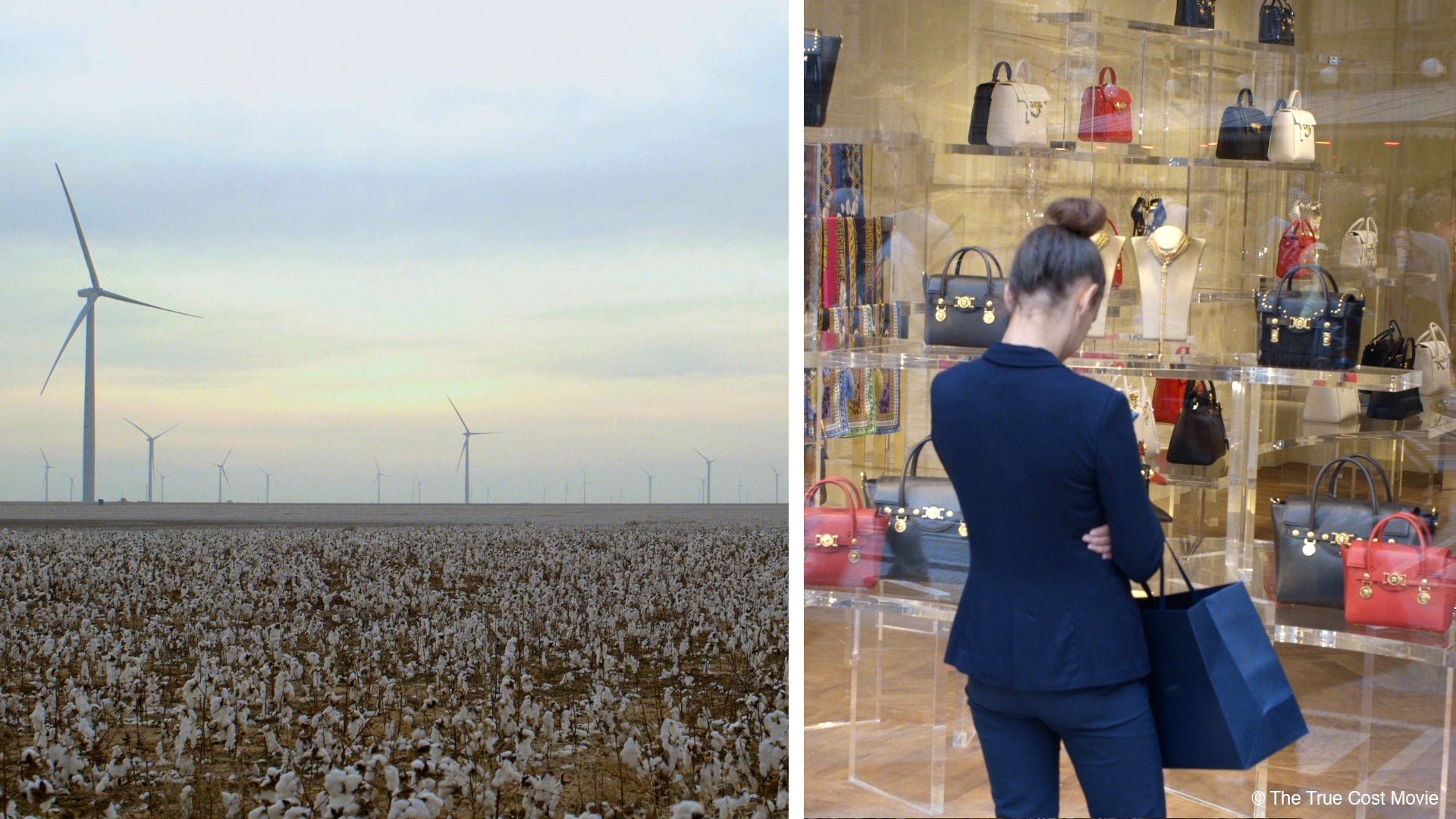Who pays the price for our clothes? The question is the subject of
the film "The True Cost". In recent years, fashion has become cheaper for us consumers and our wardrobes have continuously gotten fuller. During the past 20 years, the amount of clothes we buy every year has increased by 400%. Many consumers buy so much and do not even wear them. For consumers prices continue to sink, and at the same time for the environment and the persons involved in the production, costs are increasing immensely.

Fast Fashion - What Is It?
Every year new collections and new trends are produced. It speaks for itself that most of us follow suit and buy new clothes also. It is exactly this
seasonal trend of purchasing garments at cheap prices that describes the term Fast Fashion. Especially large fashion chains are continuously driving this trend onward with other new collections and so-called It Pieces. Above all, since Fast Fashion has to be cheap and production costs kept as low as possible, the quality suffers. Should a manufacturer refuse to produce even more cheaply, a switch to another one, who willingly accepts, is easily done. The impact of Fast Fashion on environment and people involved in the production chain is devastating.

The Fashion Industry is the Most Environment-Polluting Business After the Oil Industry
Unbelievable, but unfortunately true: only the oil industry is even more harmful to the environment than the fashion industry - and Fast Fashion plays an enormous part in it. Most of the garments are not biologically degradable. The huge quantities of clothing that are made and sold every year also produce
tons of textile waste; because room is needed in your wardrobe for storing the new trends.
Not only throwing clothes away harms our environment, also production at the lowest possible cost damages the environment. Over 90% of the cotton that our clothing is made out of is
genetically modified and has been treated with pesticides. Organic cotton, on the other hand, is much more environmentally friendly - but also more expensive.
Leather production also has a negative impact on our environment. The animals that are bred produce large amounts of Methane. Chemicals used for tanning leather harm people's health and
contaminate our drinking water. Cancer and other diseases, such as asthma, are the consequences for persons living in the affected regions.

Countless People Pay for Fast Fashion With Their Lives
Those who produce our clothes do not just struggle with illness, they also have to work under very bad conditions. To sell fast fashion at bargain prices to the consumer, the manufacturers are paid low prices, which in turn has a negative effect on the wages of the workers. Workers, who form unions or demonstrate for higher wages are beaten up - sometimes even to death. Some are also suspended from work, others even end up in jail. The employed workers have no choice. In order to earn their livelihood and that of their children, they are forced continue working under such conditions.
Many textile factories are in catastrophic conditions, leading to tragic accidents every so often. The greatest tragedy occurred in Bangladesh in 2013 when Rana Plaza, an eight-story building, collapsed. There, mainly in-house textile manufacturers were producing for several large fashion labels. More than 1,000 persons lost their lives and more than 2,400 were injured. Days before, the owner had been made aware of cracks in the building, but the staff were forced to continue working.
As a result, many large labels selling Fast Fashion have promised, in written guidelines, to closely check and improve working conditions in manufacturing countries. But these guidelines do not guarantee the workers a safe and good life because working conditions are still remain too bad. Some manufacturers use legal loopholes, in that they work together with sub-contractors, who do not have to adhere to the guidelines.

What Consumers Can Do
We, in the Western world, do not get to see the negative consequences of the fashion industry. All the more difficult it is to determine what clothing can be bought with a good conscience. And yet, even with a few small changes, we can positively change our consumer behavior. First of all, no matter if you buy Fast Fashion or not, you should shop less. Instead of following every new trend and constantly putting the latest It Piece in your wardrobe, you could look for garments that can be worn longer and combined with other clothing items. This reduces textile waste. A selection of sustainable and high-quality Yogini Basic Tops and Yoga Pants can be found here.
Even those whose budget for clothing is limited should focus more on quality than quantity. Since you are investing in durable material, so you can wear your clothes longer - in the long run - this comes even cheaper for you than buying cheap clothes. As the saying goes: Whoever buys cheap, buys twice. Furthermore, you can be sure, that when a T-Shirt costs ten Euros, the manufacturer hardly earns much. After all, the fashion label wants to make the profit.
Find out in advance more about the labels you buy. Where do they produce? How do they produce? Which materials are used? This information can be partly found on the labels in your clothing. Bangladesh and Pakistan, in particular, are low-wage countries where workers are paid very poorly. Polyester and Polyurethane are not biologically degradable. Instead, organic cotton protects your skin and is environmentally friendly. Those who work with high-quality fabrics and produce under fair conditions, also reveal this fact. Learn more about our production here. You can read about the fabrics we use on this page.


































